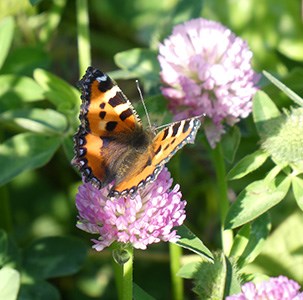Facts:
Natuschka Lee is a researcher at the department of Ecology and Environmental Sciences.
Read more about SITES Röbäcksdalen here
Read more about SITES on the official webpage

At SITES Röbäcksdalen there are a few ongoing projects regarding pollinating insects. The aim is to get a better understanding of which pollinating insects that exists in northern Sweden, but also to create opportunities for researchers to use the station for research about wild and domesticated pollinators and other relevant insects.
Pollinating insects are essential for the reproduction of many plants, including some crops for food production. According to several studies the biodiversity among insects is decreasing, though facts for local conditions can be scarce. At SITES Röbäcksdalen there are a few ongoing projects regarding pollinating insects. The aim is to get a better understanding of which pollinating insects that exists in northern Sweden, but also to create opportunities for researchers to use the station for research about wild and domesticated pollinators and other relevant insects. The station houses two hives with Nordic bees, which are available for researchers to use. Moreover, during the winter we will investigate how we can build up a continuous inventory program around pollinators at the station. There is also a registered butterfly walk of 1.2 km at the Swedish butterfly monitoring site for future systematic monitoring activities.
Natuschka Lee, researcher at Umeå University and project assistant Philippe Simon has done an pilot inventory of pollinating insects during the summer, at four different places. Two places were close to meadows and forest landscapes, one was beside a pasture with a lot of white clover, and one was beside the Degernäs creek close to a ley. The Nordic bee was of course one common pollinator, found on different plants and during different occasions. Also, the hoverfly occurred in several places, on several plants and during several occasions, and this was also the case for some butterfly species. More detailed inventory studies will be done during 2020 and genetic and microbial studies of the Nordic bee are also done.
Natuschka Lee is a researcher at the department of Ecology and Environmental Sciences.
Read more about SITES Röbäcksdalen here
Read more about SITES on the official webpage
Johanna Wallsten, Researcher/SITES manager Röbäcksdalen
Department of Crop Production Ecology
johanna.wallsten@slu.se, +46(0)90-786 8716